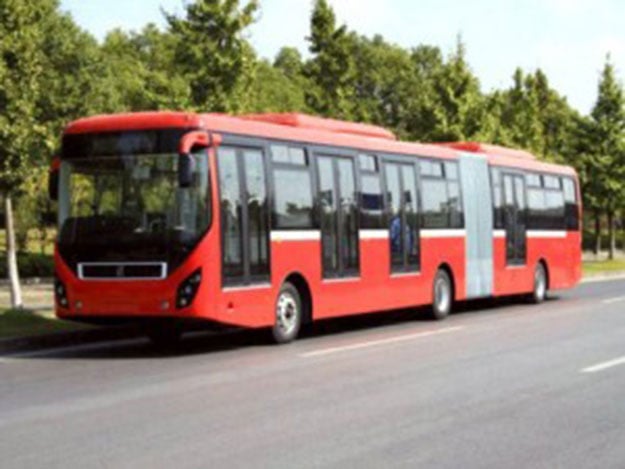
According to estimates, 60 per cent of Karachi's 24.2 million daily trips are realised through the existing buses and motor rickshaws. Meanwhile, the number of registered public buses has declined from 22,313 in 2011 to 12,399 in 2014. However, after working with various ideas, it would appear that there is finally hope that Karachi may now actually get to experiment with its first public mass transit system - the Bus Rapid Transit (BRT) model.

The BRT system was first proposed for Karachi in the 'Public-Private based environmental friendly public transport system for Karachi (2006)'. Subsequently, the Asian Development Bank (ADB) took over the BRT projects as a part of the Megacity Project and identified three priority corridors. However, the ADB withdrew the BRT project in 2007.
The Karachi Transportation Improvement Project (KTIP) was later conducted by the Japan International Cooperation Agency (Jica), in collaboration with the Karachi Mass Transit Cell (KMTC) of the city government. After the master plan stage, Jica selected two BRT corridors, namely the Green Line and the Red Line.
As it now stands, the status of the BRT lines is following different funding and management models. In the Yellow Line, a public private participation (PPP) model is proposed through a consortium. In the Blue Line, again there is a PPP model with an unsolicited proposal being made by Bahria Town. In the Green Line, there is public sector funding for infrastructure only. In the Red Line, the ADB is willing to provide a loan for detailed design, implementation and integration of the network.
In terms of BRT development, the planning is now split into two phases. In Phase 1 (Red), the planned network runs from Safoora roundabout to Tower at MA Jinnah Road through University Road, with a branch extended on Sharae Quaideen Road to accommodate integration with the proposed Yellow Line. In Phase 2 (Blue), it runs from Landhi Road to Nursery through Sharae Faisal.
The case for BRT
The BRT is considered a high-quality bus-based transit system that delivers fast and cost-effective services at metro-level capacities. It operates through the provision of dedicated lanes, with busways and stations that are normally aligned to the centre of the road, off-board fare collection and frequency in operations.
Since the BRT contains features that are to some extent similar to a light rail or metro system, it is considered a more reliable and faster mass transportation mode than regular bus services.
A BRT bus, in terms of carrying capacity, is equal to 125 cars. In terms of cost of construction and maintenance, too, this mode of public transit is cost-effective as compared to other mass transit systems.

The city of Curitiba, Brazil, introduced this system in 1974 and also became the first successful case of BRT in the world. However, the most successful and innovative BRT system is considered that of Bogota, Columbia, known as the TransMillenio, which was introduced in the year 2000 and can cater to 43,000 passengers per hour in each direction. The average capacity is considered to be 13,000 passengers per hour per direction.
Since the 2000s, the BRT system has been introduced in a number of cities in the world, including Taipei, Seoul, Jakarta, Beijing, New Delhi, Istanbul, Lima and Bangkok. Presently, an average of 27 million people — 1 per cent — of the global urban population use the BRT each day. A total of 15 cities started BRT operations in 2010, 49 have BRT under construction while 31 are starting to plan.
While the BRT system bodes well for Karachi, it is imperative that lessons learnt from the unsuccessful experimentations made in the metropolis in the past are made an essential part of the planning process so that plans and designs on paper find a viable and sustainable space on the ground through effective implementation.
Farhan Anwar is an urban planner and runs a non-profit organization based in Karachi city focusing on urban sustainability issues
Published in The Express Tribune, May 11th, 2015.
















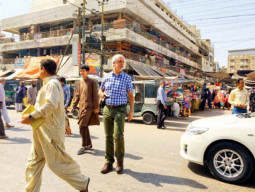



1713916020-0/WhatsApp-Image-2024-04-24-at-4-44-01-AM-(1)1713916020-0-270x192.webp)
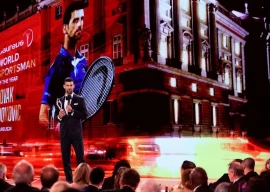
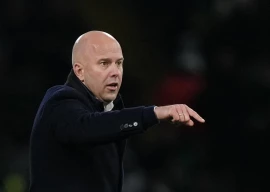

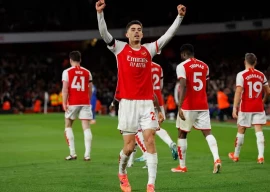









COMMENTS (17)
Comments are moderated and generally will be posted if they are on-topic and not abusive.
For more information, please see our Comments FAQ